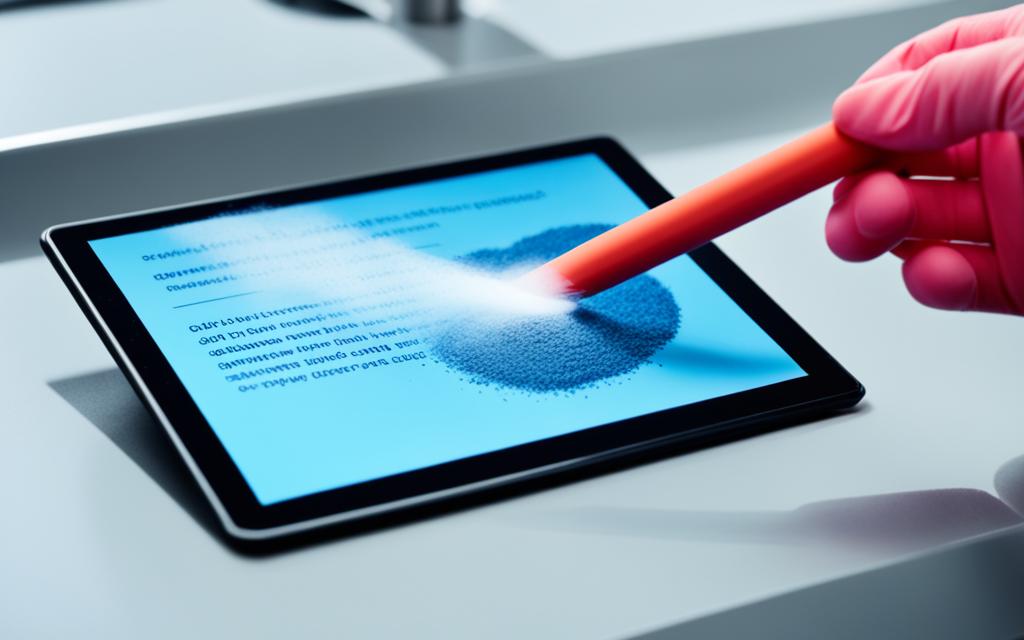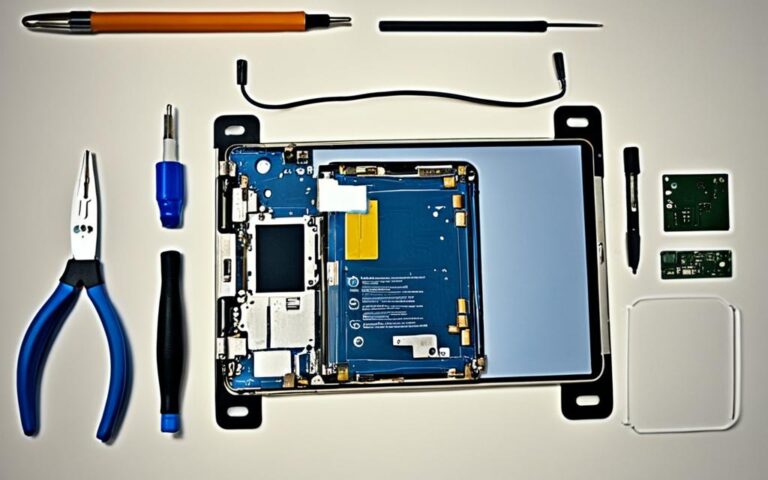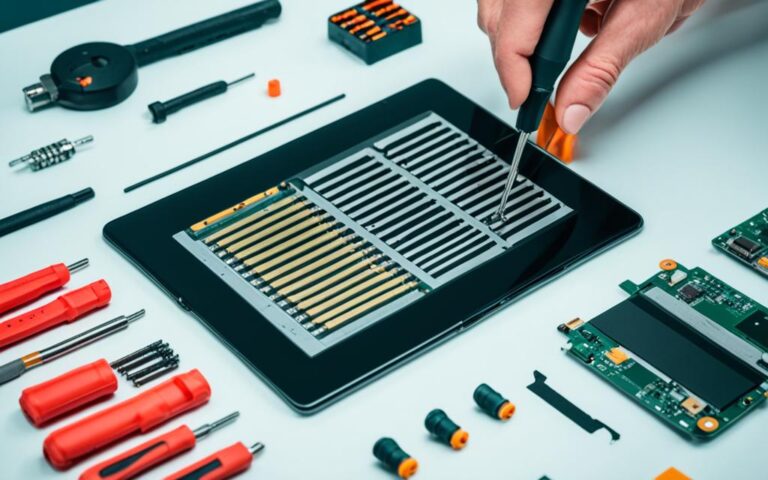Preventing and Dealing with Tablet Dust Accumulation
Tablet dust accumulation can lead to various problems in the manufacturing process, such as jams, obscured sensors, and faulty packaging closure. It can also cause increased operator exposure to APIs and diminish patient confidence in the end product.
Technological innovations in dedusting equipment have greatly improved the dedusting process, including compressed air-jet assist and circumferential dust-extraction curtains. Taller, elevating spiral dedusters have also been developed to improve dedusting performance. Quick changeover and dust-tight design are other important considerations in preventing tablet dust accumulation.
By implementing these measures, tablet dust accumulation can be effectively prevented, resulting in a clean and well-functioning tablet production process.
Dedusting Performance
The performance of tablet dedusters is crucial in effectively removing dust from tablets. Traditional vibration-and-vacuum deduster designs are no longer sufficient for optimal dedusting performance. Solutions incorporating compressed air-jet assist and a circumferential dust-extraction curtain have been proven to improve the dedusting process.
These innovations create a curtain of dust extraction air right around the outer circumference of the spiral, helping to tumble the tablets and push any loosened dust towards the dust extraction curtain.
“The compressed air-jet assist and dust-extraction curtains significantly enhance the dedusting performance of tablet dedusters. They create a more efficient and targeted airflow that effectively removes dust from the tablets, resulting in a cleaner and higher quality end product.” – Dr. Emily Parker, Tablet Manufacturing Expert
Improved Efficiency and Dust Removal
The combination of compressed air-jet assist and dust-extraction curtains has revolutionized the dedusting process in tablet manufacturing. Unlike traditional methods that rely solely on vibration and vacuum, these advanced features offer several benefits:
- Enhanced Dust Removal: The compressed air-jet assist creates a powerful airflow that dislodges dust from the tablets, ensuring thorough cleaning.
- Targeted Dust Extraction: The dust-extraction curtain surrounds the spiral, capturing the loosened dust and preventing its re-deposition on the tablets.
- Improved Tablet Tumbling: The airflow generated by the compressed air-jet assist helps to agitate and tumble the tablets, facilitating better dust removal.
This combination of features not only improves the dedusting performance but also minimizes the risk of dust contamination during the tablet manufacturing process.
| Traditional Deduster | Innovative Deduster |
|---|---|
| Vibration and vacuum-based dedusting | Compressed air-jet assist and dust-extraction curtains |
| Less efficient dust removal | Enhanced dust removal capabilities |
| Higher risk of dust re-deposition | Prevents dust re-deposition on tablets |
| Limited tablet tumbling | Improved tablet tumbling for better cleaning |
Height Gain Advantages
The development of taller, elevating spiral dedusters offers significant performance improvements in the tablet dedusting process. As the height is gained up to 30 inches, the dedusting performance continuously enhances, ensuring thorough removal of dust particles from the tablets.
One of the key advantages of taller systems is the ability to integrate additional functions, such as metal detection, buffer hoppers, and multi-way diverters. This integration enhances the overall efficiency and effectiveness of the tablet manufacturing process.
Taller dedusters also enable primary or secondary sampling of tablets, providing opportunities for in-process control checks. Tablets can be sampled either before entering the dedusting process or after passing through the metal detector, allowing for quality assurance and compliance with regulatory standards.
Enhanced Performance
By increasing the height of the dedusters, the tablets have a longer path as they move through the equipment. This extended path allows for better separation of dust particles from the tablets, resulting in enhanced dedusting performance.
The taller the dedusting system, the more opportunities there are for tablets to come into contact with the dedusting mechanisms, ensuring a more thorough removal of dust particles.
This increased height gain also allows for better access to tablet entry points and exit points within the deduster, facilitating a more efficient dedusting process.
Sampling Capabilities
One significant advantage of taller dedusters is the ability to sample tablets during the manufacturing process. This sampling can occur at the tablet entry point before dedusting or at the exit point after passing through the metal detector.
Sampling tablets before the dedusting process allows for in-process control checks, ensuring the quality of the tablets before moving forward. On the other hand, sampling tablets after the metal detector ensures that any potential contamination is identified and addressed, guaranteeing the integrity of the end product.
Taller dedusters provide the necessary height and space required for efficient and accurate tablet sampling, contributing to overall quality control and compliance.
Quick Changeover
Efficient tablet dedusting requires quick changeover. To facilitate this, segmented spirals made of either polymer or stainless steel have become increasingly popular. Compared to traditional one-piece stainless-steel spirals, segmented spirals allow for easier and faster dismantling, cleaning, drying, and reassembly, saving valuable production time.
One of the main advantages of segmented spirals is the absence of dirt traps. This means that there are no crevices or gaps where dust can accumulate, ensuring a more effective and thorough cleaning process. Additionally, stainless-steel models of segmented spirals feature fully continuous TIG welds, creating a smooth surface that further minimizes any potential dust-trapping areas.
The use of segmented spirals not only improves the efficiency of the cleaning process but also enhances the overall dedusting performance. By eliminating the risk of dust accumulation in hard-to-reach areas, segmented spirals help maintain a clean and hygienic environment throughout the tablet dedusting process.
Dismantling and Reassembly Process
- Dismantling: The segmented design of the spirals enables easy dismantling by simply removing the individual segments. This allows for quick access to each section, streamlining the cleaning process.
- Cleaning: Once the spirals have been dismantled, the segments can be thoroughly cleaned to remove any dust, debris, or residue. This ensures that the dedusting equipment is in optimal condition for the next production run.
- Drying: After cleaning, it is important to ensure that the segments are completely dry to prevent any moisture-related issues during reassembly.
- Reassembly: Reassembling the segmented spirals is a straightforward process, as each segment is designed to fit seamlessly together. This fast and efficient reassembly minimizes downtime and maximizes productivity.
Overall, the use of segmented spirals in tablet dedusting equipment offers numerous benefits, including quicker changeover, easier dismantling, more effective cleaning, and seamless reassembly. By investing in this innovative technology, manufacturers can optimize their dedusting process and improve the overall efficiency of tablet production.
Comparison of One-Piece Stainless-Steel Spirals and Segmented Spirals
| Features | One-Piece Stainless-Steel Spirals | Segmented Spirals |
|---|---|---|
| Dismantling Process | Time-consuming, requires removing the entire spiral | Efficient, individual segments can be easily removed |
| Cleaning Process | Difficult to reach and clean all areas, potential for dust accumulation | Thorough cleaning, absence of dirt traps |
| Reassembly Process | Challenging, requires aligning and connecting the whole spiral | Seamless, segments fit together easily and securely |
| Overall Efficiency | May result in longer changeover times and increased production downtime | Quick changeover, reduces downtime and improves productivity |
Dust-Tight Design
A complete dust-tight system is paramount in preventing tablet dust accumulation at every stage of the manufacturing process. It is vital to fully enclose the tablets not just inside the deduster, but also during their transfer from the press to the metal detector and discharge into the final container.
A dust-tight design serves two critical purposes. Firstly, it prevents the ingress of dust into the room and other equipment, ensuring a clean and controlled manufacturing environment. Secondly, it facilitates efficient clean-down time for both the equipment and the compression room, minimizing production downtime.
To achieve a dust-tight system, silicone connections are employed for their superior sealing properties. These connections provide airtight and secure joints that effectively prevent dust leakage. In addition, a thoughtfully designed enclosure with no windows or glued or pressed seals further enhances the dust-tightness, leaving no room for dust to penetrate.
“A dust-tight system is essential in keeping the tablet manufacturing process free from dust contamination, ensuring product quality and maintaining production efficiency.”
Implementing a dust-tight design offers several benefits. It protects the tablets from dust accumulation, maintaining their quality and preventing potential issues such as compromised functionality or contaminated packaging. Furthermore, it safeguards the integrity of the overall manufacturing process, ensuring compliance with regulatory standards and maintaining patient safety.
Let’s now take a closer look at the components of a dust-tight system:
Silicone Connections
Silicone connections play a crucial role in achieving a dust-tight seal. Their flexibility and resilience allow for a secure fit between different equipment components, preventing any gaps or leaks where dust particles could escape. With their excellent resistance to high temperatures and chemical exposure, silicone connections provide long-lasting and reliable sealing performance, guaranteeing the integrity of the dust-tight system.
No Windows or Glued/Pressed Seals
The design of the enclosure is equally important in maintaining a dust-tight system. By eliminating windows or relying on glued or pressed seals, the risk of dust penetration is significantly reduced. A carefully engineered enclosure, constructed with durable materials and precision manufacturing, ensures that the tablets are fully enclosed and shielded from any potential dust contamination.
Here is a table summarizing the key components of a dust-tight system:
| Component | Description |
|---|---|
| Silicone Connections | Flexible and resilient joints sealing different equipment components |
| No Windows or Glued/Pressed Seals | Design that eliminates gaps and provides a solid enclosure |
Ensuring a complete dust-tight system is crucial in safeguarding the tablet manufacturing process against dust accumulation. By employing silicone connections and adopting a design without windows or glued or pressed seals, manufacturers can achieve an airtight and secure environment, minimizing dust contamination and maximizing production efficiency. With a dust-tight system in place, clean-down time is optimized, and tablet quality is maintained at its highest standard.
Conclusion
Preventing and dealing with tablet dust accumulation is vital for maintaining the quality and efficiency of tablet manufacturing. Technological advancements in tablet dedusting equipment, such as compressed air-jet assist and circumferential dust-extraction curtains, have significantly improved the dedusting process. These innovations create a curtain of dust extraction air and help to tumble the tablets, effectively removing dust and preventing accumulation.
Taller, elevating spiral dedusters offer height gain advantages and additional functions, such as metal detection, buffer hoppers, and multi-way diverters. The increased height allows for better dedusting performance and facilitates primary or secondary sampling of tablets for in-process control checks. Quick changeover, made possible by segmented spirals, enables faster dismantling, cleaning, drying, and reassembly. The absence of dirt traps and smooth surface stainless-steel models eliminate gaps and crevices that can trap dust.
A dust-tight design is crucial in preventing tablet dust accumulation throughout the manufacturing process. Fully enclosing the tablets inside the deduster, during transfer from the press to the metal detector, and when discharging them into their final container helps avoid dust contamination. It also facilitates clean-down time of the equipment and the compression room. Silicone connections and a design with no windows or glued or pressed seals create a dust-tight system, ensuring that dust does not escape or contaminate the environment.
By implementing these measures – tablet dedusting equipment with compressed air-jet assist, height gain advantages, quick changeover, and dust-tight design – tablet dust accumulation can be effectively prevented. This results in a clean and well-functioning tablet production process, reducing jams, obscured sensors, and faulty packaging closures, minimizing operator exposure to APIs, and instilling confidence in the end product.












